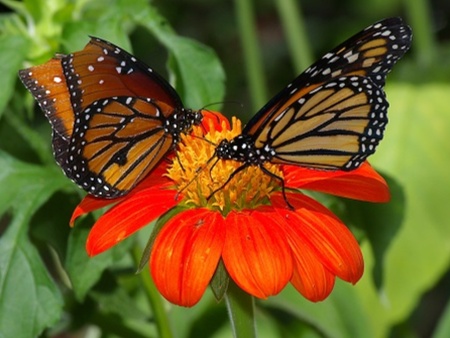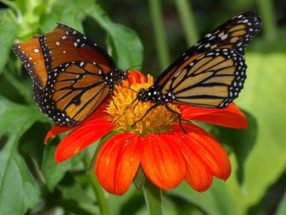
Butterfly days!
Butterflies are among the wildlife that are most enjoyed. Who has not waved nostalgic, thinking of the good old days when hayfields full of wildflowers were alive with sheets of dancing butterflies in those everlasting summers? What gardener does not welcome the sight of a buddleja bush alive with purple peacock butterflies and rust-coloured, small tortoiseshells? The holly blue in city gardens is one of the first harbingers of spring. Why even the name butterfly, so typically an English word, refers to the arrival of the yellow butter-coloured brimstone butterflies hust when the grass was again growing in May, cattle were producing lots of milk and the butter-making season had begun. Butterflies are a welcome sign of healthy biodiversity.
And yet, butterflies come from caterpillars and alas these are viewed with trepidation by many gardeners and indeed with good reason. The cabbage white butterfly can lay up to a hundred yellow eggs in one go on cabbage plants. These hatch out shortly afterwards, and their first action is to eat the empty shells from which they emerged – commendable recycling – but after that their actions are not considered by some to be so admirable.
Because caterpillars are eating machines, all they do all day is eat. Their mother has, very considerately, laid them on their food plant, in this case your cabbages, and this is what they will dine on. Caterpillars literally eat until they burst. They, unlike us humans, have their hard parts on the outside and as they eat and grow they expand against their unyielding exterior. Something must give, and after a while it is their outside skin that does. They burst up the back, wriggle out of the old skin to feel a lot more comfortable no doubt and proceed to demolish more cabbage. The new stage is called the instar stage and caterpillars have five instar stages in all.
To read more, get your copy of The Irish Garden Magazine at your local newsagent








